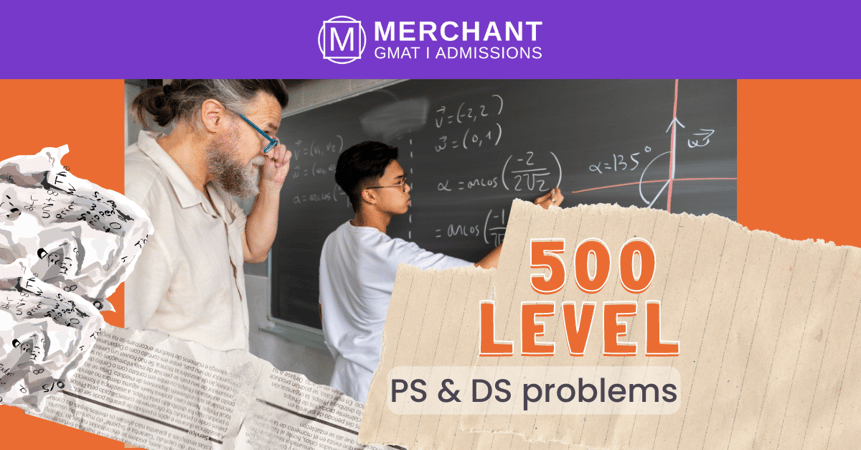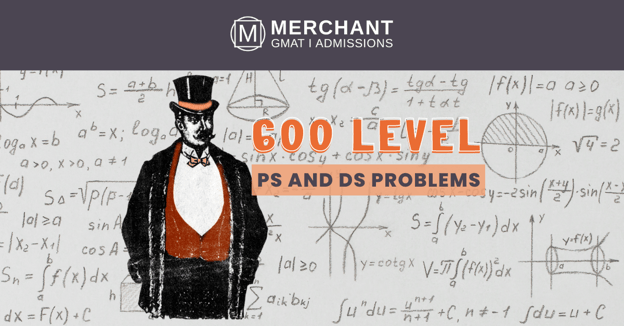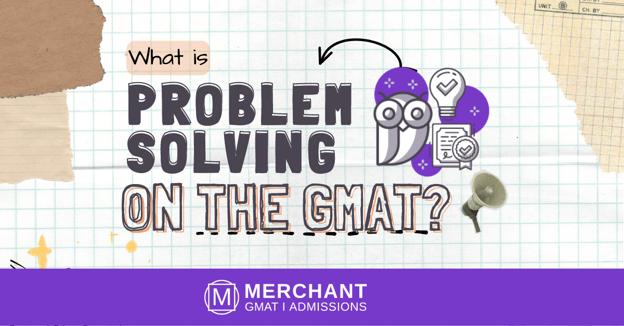Beyond the Basics: Mastering 500 Level PS and DS Problems on the GMAT

If you're aiming for a top score on the GMAT, you'll need to master complex Problem Solving (PS) and Data Sufficiency (DS) questions. In this blog post, we'll provide examples with some tips and tricks for tackling 500 level PS and DS problems. With our advice, you can confidently take on even the most challenging GMAT questions!
What are 500 level Problem Solving and Data Sufficiency problems on the GMAT, and why are they important to master?
500 level PS and DS questions on the GMAT are considered to be the easiest level. These questions require a certain level of understanding of not only content knowledge but also critical thinking skills. Each question is designed to challenge GMAT test-takers and assess their readiness for reputable business school programs. Students must demonstrate the ability to analyze large sets of data and draw precise conclusions as well as the ability to think both logically and abstractly from given information.
An example of a 500 level Problem Solving problem and how to solve it
Trying to solve a 500 level problem in PS can be difficult for many people. However, with thoughtful preparation, it is possible to tackle even the most challenging of PS problems. An example of such a problem could be : “The average (arithmetic mean) of 4 different positive integers is 125 and the largest of these is 150, what is the least possible value of the smallest of the 4 integers”
To solve this,
Tips and tricks for solving 500 level Problem Solving problems
Solving 500 level PS problems can be a daunting task, particularly if you are relatively inexperienced. However, it's often not as overwhelming as it may appear at first glance. By following some key tips and tricks, you can increase your chances of solving these complex puzzles with greater ease. Begin by breaking down the problem into smaller chunks to make it more manageable and comprehensible. Draft logical steps and equations that you think best explain the problem, then jot down your calculations – this will help detect any flaws in your approach and prevent making mistakes during the process. To properly visualize how each layer of data affects the other layers, draw diagrams or graphical representations to gain further clarity on the matter. Finally, summarize your findings in simple yet accurate language for better comprehension. By staying mindful of all these components through every stage of PS, you'll be able to work efficiently and accurately towards finding a solution to more complicated problems.
An example of a 500 level Data Sufficiency problem and how to solve it
Solving a 500 level DS problem requires an organized and mindful approach in order to ensure accuracy of the overall solution. This type of problem asks whether the given information is sufficient to answer the question posed. To solve this type of problem, it is important to identify all relevant pieces of data, one-by-one, considering how they interact with each other and whether additional information is necessary for a conclusive answer. Consider an example: The perimeter of triangle ABC is 52 inches and one angle measures 20°. Is the length of side BC 44 inches? In order to answer this question we must consider several criteria that are needed to calculate the length of side BC and determine if these criteria are met by the given data. Do we know all three angles? No –one angle alone does not provide enough information for a conclusive answer as it does not define what type of triangle ABC would be. Therefore in this instance, insufficient data has been provided to answer the question posed as additional information about angles A and B is required.
Tips and tricks for solving 500 level Data Sufficiency problems
Solving 500 level DS problems is a key part of cracking most MBA entrance exams. To make sure you ace them, here are some helpful tips and tricks that can make the process easier. To begin, take your time to read the question thoroughly before attempting it as this will help you identify which data is incredibly important and which is not necessary at all. Also, remember that the real task at hand is to assess whether sufficient data is given and, if you don't possess enough knowledge to solve the problem itself, try choosing an answer which requires the least additional data.
GMAT 500 level Problems of PS and DS can be incredibly challenging, but with a few tips and tricks and plenty of practice, you’ll be well on your way to conquering them. Analyzing an example problem and specific steps on how to solve it will help you understand the underlying thought process behind tackling each problem. The key is to practice frequently and gain a deeper understanding of how to approach each type of problem. There are several resources available that provide practice tests, problems, and hints, such as practicemgdg.com and gmatclub.com. Along the way, remember to stay motivated by setting achievable goals and reaching out for guidance if necessary. Start your GMAT journey with expert coaching from Merchant GMAT & Admissions today!





